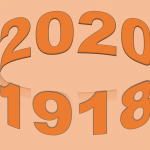Let me begin with an apology. This spat will not include a lot of formal research or quotes. Well, not as much as I want to give. This is a topic that each person will need to do their own research on and come to their own conclusions. With that said, let’s get started.
BRICS stands for Brazil, Russia, India, China, and South Africa. These five power countries united and formed an alternative currency to the United States dollar, appropriately called BRICS. Currently, the US dollar is the world currency exchange. BRICS aims to end the West’s monopoly on the global economy by providing their alternative currency which is said to be backed by gold. Some hold that this probably will not happen. Others take the position that it is happening as you read this article.
Regardless, few will argue that BRICS has raised the eyebrow of potential economic change and the imaginations are stirring. It is in the best interests of our students (and ourselves) that we teachers at least make students aware of changes in the economic climate, and how they can begin to prepare themselves for an ever expanded global society. But first, here are a few things about BRICS that we should know we should know:
- BRICS is diverse and is known to be cooperative.
- BRICS plans to provide financing alternatives to countries through their New Development Bank by the end of 2023.
- BRICS is inclusive. They already have interest from at least 19 other countries to join them, including Argentina, Iran, Mexico, and Saudi Arabia.
In addition to the promise of being backed by gold, these three points alone help clarify why so many (developing) countries are interested. So, how do we bring this knowledge into the classroom in a way that empowers our students and excites them about the future? I will share to you what we have been doing in my class.
Tell them about it
Of my 31 students, only 1 had heard of BRICS before I introduced it to the class…and he learned it from his grandpa. They had not heard of it on the news social media, or family conversations. Therefore, this was a great teaching opportunity. I allowed the students to ask questions and do research based on areas they felt were important. In the end, they were curious and wanted to learn more about BRICS and how this can affect, or not affect, their futures. This brings me to the next point.
Use BRICS as a teaching opportunity
Regardless of how much or how little your students know about these countries, each has a rich and diverse history that lends itself easily to a variety of research. Areas and approaches can include:
- Traditional culture and history research
- Future based research
- Strength and needs analysis
- How to prepare to embrace a new culture
- Study of the life cycle of world dominating countries through history
- Employment trends; skills needed in a global economy
In the end, my students seem to feel optimistic and have decided for themselves that regardless of what happens with BRICS and the US dollar, they expect to interact on a regular basis with other countries as they grow older. Several have taken up Duolingo and are starting to study Arabic, Hindi, Spanish, Russian, and Zulu. Students with familial connections to BRICS countries have taken on a new interest in learning about and connecting to their native land. Students are more interested in US economics, politics, and social systems. What impressed me the most is that they decided we will make “global awareness and global citizenship” a natural part of our daily academics. As a teacher, I have to say I am impressed.








